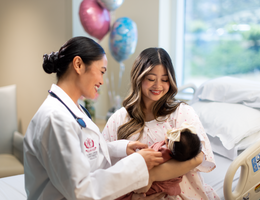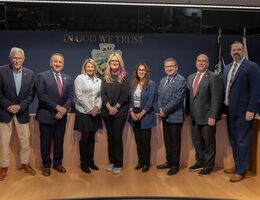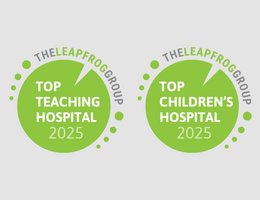

Zaina Ali, an eighth grader, has achieved straight A's and earned multiple Presidential Academic Awards. Outside the classroom, she enjoys swimming, biking, and playing the piano, favoring Taylor Swift songs. Her artistic talent shines through the intricate origami stars and handcrafted bracelets she creates.
But at just 13 years old, Zaina has endured trials that few her age can imagine. She was born with primary hyperoxaluria type 1, a rare genetic disorder affecting only one to three people per million in Europe and North America, according to the National Institutes of Health.
PH1 is a condition where patients are born without the ability to produce a key liver enzyme that is critical in breaking down a waste product called oxalate that is normally excreted in the urine. As oxalate accumulates in the body it can result in kidney damage and, if untreated, can lead to kidney and other organ failure.
"There were a lot of appointments, blood tests, and long nights, but we learned to take things one day at a time," said Hina Ali, Zaina's mother.
Zaina was diagnosed two months after she was born when she had a sudden, jerky body movement that seemed like a seizure, prompting an emergency visit to the hospital where doctors discovered that Zaina's kidneys were shutting down. She had to start dialysis as a life sustaining support for her kidney failure. This early diagnosis saved Zaina's life and revealed she would need both a kidney transplant and a liver transplant to prevent future complications.
In 2012, Zaina underwent a combined liver and kidney transplant at UCLA, a procedure that provided her body with the enzyme it had been missing and gave her a healthy kidney so that she could stop dialysis. The transplant surgery was a lengthy, two-day procedure involving a 12-hour surgery one day and a 10-hour surgery the next day.
Since then, her care has been co-managed by UCLA and Loma Linda University Children’s Hospital, requiring collaboration among multiple specialists. "The medications and immunosuppression protocols are similar to those for single-organ transplants but involve a higher risk given that she is a dual organ transplant recipient," said Rita Sheth, MD, a pediatric nephrologist at Loma Linda University Children's Hospital.
The Ali family's struggles, however, extend beyond Zaina. Hina's husband also required a kidney transplant, adding another layer of complexity to their journey. While on dialysis, he remained the family's breadwinner, demonstrating remarkable resilience in the face of adversity. Despite these hardships, Hina has been the family's anchor, providing care and support.
The Ali family's journey has been marked by both heartbreak and hope. Zaina's older sister also lived with PH1, enduring a failed kidney transplant and years of dialysis before succumbing to the disease. Throughout these trials, Hina has been a pillar of strength, supporting her daughters and husband while grappling with the emotional weight of a genetic condition.
"We treat the entire family unit in pediatric care," Sheth said. "The burden on families is immense, and our role is to provide comprehensive support."
A breakthrough came during Hina's pregnancy with her youngest child. Genetic testing revealed that Nyle, now 6 years old, does not have PH1. "It was a miracle," Hina said.
"Don't give up. It gets better," Zaina encouraged other families facing similar challenges.
Loma Linda University Children’s Hospital (LLUCH) has been named a Best Children’s Hospital for 2024-2025 by U.S. News & World Report. Its pediatric nephrology program earned a national ranking, securing the #46 spot.
For more information on pediatric nephrology, visit online.


